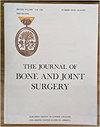The Impact of Unplanned Reoperation Following Adult Spinal Deformity Surgery
1区 医学
Q1 Medicine
引用次数: 0
Abstract
The long-term impact of reoperations following adult spinal deformity (ASD) surgery is still poorly understood. Our aim was to identify the relationship between unplanned reoperation and health-related quality of life (HRQoL) gain at 2 and 5 years of follow-up. We included patients enrolled in a prospective ASD database who underwent surgery ≥5 years prior to the start of the study and who had 2 years of follow-up data. Adverse events (AEs) leading to an unplanned reoperation, the time of reoperation occurrence, invasiveness (blood loss, surgical time, hospital stay), and AE resolution were assessed. HRQoL was measured with use of the Oswestry Disability Index, Scoliosis Research Society-22, and Short Form-36. Linear models controlling for baseline data and index surgery characteristics were utilized to assess the relationships between HRQoL gain at 2 and 5-year follow-up and the number and invasiveness of reoperations. The association between 5-year HRQoL gain and the time of occurrence of the unplanned reoperation and that between 5-year HRQoL gain and AE resolution were also investigated. Of 361 eligible patients, 316 (87.5%) with 2-year follow-up data met the inclusion criteria and 258 (71.5%) had 5-year follow-up data. At the 2-year follow-up, 96 patients (30.4%) had a total of 165 unplanned reoperations (1.72 per patient). At the 5-year follow-up, 73 patients (28.3%) had a total of 117 unplanned reoperations (1.60 per patient). The most common cause of reoperations was mechanical complications (64.9%), followed by surgical site infections (15.7%). At the 5-year follow-up, the AE that led to reoperation was resolved in 67 patients (91.8%). Reoperation invasiveness was not associated with 5-year HRQoL scores. The number of reoperations was associated with lesser HRQoL gain at 5 years for all HRQoL measures. The mean associated reduction in HRQoL gain per unplanned reoperation was 41% (range, 19% to 66%). Reoperations resulting in no resolution of the AE or resolution with sequelae had a greater impact on 5-year follow-up HRQoL scores than reoperations resulting in resolution of the AE. A postoperative, unplanned reoperation following ASD surgery was associated with lesser gain in HRQoL at 5 years of follow-up. The association did not diminish over time and was affected by the number, but not the magnitude, of reoperations. Resolution of the associated AE reduced the impact of the unplanned reoperation. Prognostic Level II. See Instructions for Authors for a complete description of levels of evidence.成人脊柱畸形手术后意外再次手术的影响
人们对成人脊柱畸形(ASD)手术后再次手术的长期影响仍知之甚少。我们的目的是确定非计划再手术与随访2年和5年的健康相关生活质量(HRQoL)提高之间的关系。 我们纳入了前瞻性 ASD 数据库中登记的患者,这些患者在研究开始前≥5 年接受过手术,并有 2 年的随访数据。我们评估了导致意外再次手术的不良事件(AE)、再次手术发生的时间、侵入性(失血量、手术时间、住院时间)以及AE的缓解情况。HRQoL 采用 Oswestry 残疾指数、脊柱侧凸研究协会-22 和 Short Form-36 进行测量。利用控制基线数据和指数手术特征的线性模型来评估随访2年和5年的HRQoL收益与再次手术的次数和侵入性之间的关系。此外,还研究了5年的HRQoL改善与非计划再手术发生时间之间的关系,以及5年的HRQoL改善与AE缓解之间的关系。 在 361 名符合条件的患者中,316 人(87.5%)的 2 年随访数据符合纳入标准,258 人(71.5%)的 5 年随访数据符合纳入标准。在 2 年的随访中,96 名患者(30.4%)共进行了 165 次意外再手术(每名患者 1.72 次)。在 5 年的随访中,73 名患者(28.3%)共进行了 117 次意外再手术(每名患者 1.60 次)。再手术最常见的原因是机械并发症(64.9%),其次是手术部位感染(15.7%)。在5年的随访中,67名患者(91.8%)导致再次手术的AE得到了解决。再次手术的侵袭性与5年的HRQoL评分无关。就所有 HRQoL 指标而言,再次手术的次数与 5 年 HRQoL 的改善程度相关。每次非计划再手术导致的相关 HRQoL 平均降低率为 41%(范围为 19% 至 66%)。与AE缓解的再次手术相比,AE未缓解的再次手术或后遗症缓解的再次手术对5年随访HRQoL评分的影响更大。 ASD 术后非计划性再次手术与随访 5 年的 HRQoL 增益相关性较小。这种相关性不会随着时间的推移而减弱,而且会受到再手术次数的影响,但不会受到再手术程度的影响。相关AE的解决降低了意外再次手术的影响。 预后二级。有关证据等级的完整描述,请参阅 "作者须知"。
本文章由计算机程序翻译,如有差异,请以英文原文为准。
求助全文
约1分钟内获得全文
求助全文

 求助内容:
求助内容: 应助结果提醒方式:
应助结果提醒方式:


